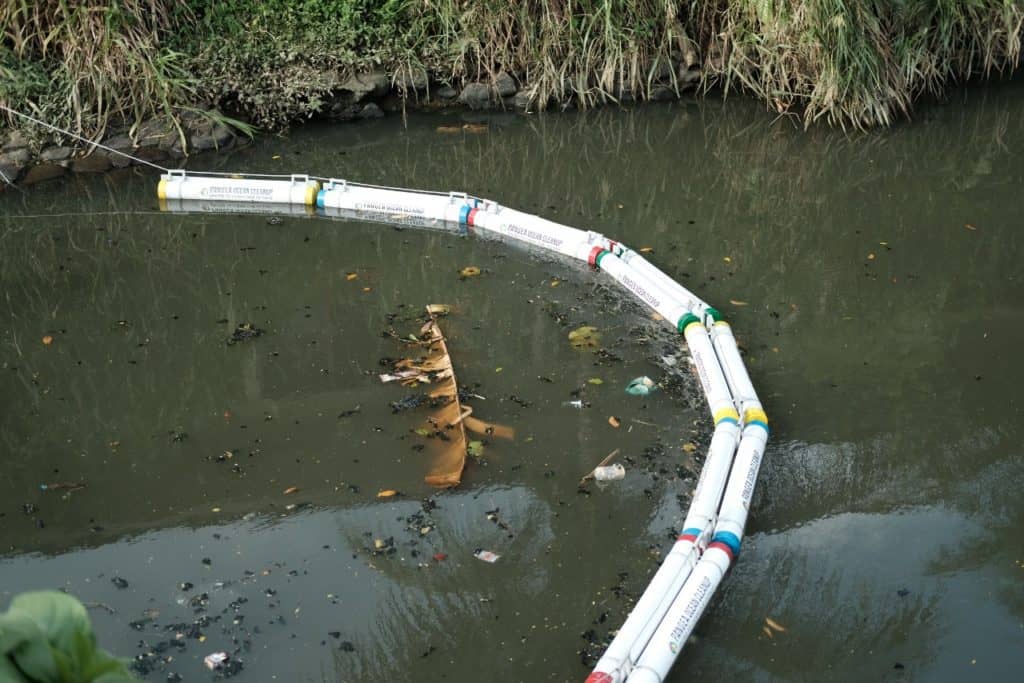Plastic pollution in oceans is overwhelming. A standard garbage truck in New York holds about 13.6 metric tons of trash after it’s been finely packed. This equates to nearly 600,000 garbage trucks full of trash per year, 50,000 garbage trucks of trash per month, 1,600 per day, and more than one full garbage truck per minute getting dumped into the ocean, with no plan for removal, directly threatening the ecology.
What are the solutions?
Many environmentalist groups are working to solve the ocean plastic problem by removing plastic that has accumulated over time. While this is one of many ideal solutions to protecting ocean creatures who accidentally consume plastic, this practice does not abolish the sources of plastic. Oceans can be best protected from toxic waste by targeting the rivers that transfer collected waste and empty into them first.
Scientists have completed multiple studies over the last decades to show that the vast majority of plastic enters oceans via rivers and coastlines. A 2021 study (and the most empirically detailed one of its kind) found that 80% of riverine plastic entering the ocean comes from the world’s top 1,656 dirtiest rivers.
This means that if barriers could be placed in those rivers to block plastics from entering oceans, they would have 80% less plastic coming in all the time. Annually, this would shift the incoming waste from 8 million metric tons down to 1.6. Still a lot of trash, but an immense improvement.

3 amongst the top ten most polluted rivers around the world run through India.
Ganga, Yamuna and Indus cover a large distance, exposing them to more industrial waste, more riverside settlements and unauthorized activities happening near the rivers that account for the several metric tonnes of waste being dumped into the oceans through these rivers.
Industrial waste generated includes cafeteria garbage, dirt and gravel, masonry and concrete, scrap metals, trash, oil, solvents, chemicals, weed grass and trees, wood and scrap lumber, and similar waste.
Barriers, although being a cost effective and practical solution, don’t factor in the various kinds of waste. Usually, all these barriers can capture floating waste, which is only the tip of the iceberg. Waste like masonry, concrete and scrap metal settle at the bottom of the rivers, causing degradation of the quality of water for drinking, or wildlife and increases chances of floods due to blockage. Heavy waste along with chemical waste even increases the cost of treatment.
Most rivers that run through the city of Mumbai, have been polluted beyond repair, one such example being the Mithi river. Many citizen and government initiatives to protect the water and collect garbage have been implemented in the last decade; like setting up river barriers, water treatment plants, and water pollution taxes for industries that discard waste into the rivers. However, the Mithi River continues to be covered in plastic and garbage continues to wash up on the beaches. Measures targeting polluting industries and the treatment of wastewater with carbon are necessary, but they do not solve the lack of sanitation and slum waste collection.
Read more: Here’s how Mumbai’s most polluted river is being cleaned up
How can you help clean our oceans?
September 18, 2021 was World Cleanup Day. A massive international clean up involving over 180 countries and 50 million volunteers focusing on rivers, beaches, forests, and cities.
Let’s Do It India is the Indian chapter of ‘Let’s Do It World’ organization that has been operating on issues of environmental conservation for several years. They conducted cleanups in Bengaluru, Mumbai, Ahmedabad, Lucknow amongst many other cities as part of world clean up day, 2021.
Getting your hands dirty and actually helping to remove river plastic is an excellent way to prevent plastics from entering oceans, and ultimately staying there. Better yet, you can drastically increase your impact by supporting companies creating and installing river barriers that collect plastic trash for easy removal
Pangea Movement is an excellent example of an organisation focused on removing trash at its source. Their World Cleanup Day impact was massive – installing 15 river barriers within 3 of the world’s top dirtiest rivers located in Padang, Sulawesi, Indonesia.

Mumbai can learn from the Pangea movement; with the help of government bodies and support from the citizens we should encourage and facilitate such largescale river cleanups to help our environment and save our rivers from permanent damage. With that you can make a real difference to cleaning up our oceans.